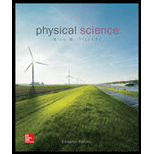
Physical Science
11th Edition
ISBN: 9780077862626
Author: Bill Tillery, Stephanie J. Slater, Timothy F. Slater
Publisher: McGraw-Hill Education
expand_more
expand_more
format_list_bulleted
Textbook Question
Chapter 6, Problem 7AC
The rate at which an
a. volt.
b. amp.
c. coulomb.
d. watt.
Expert Solution & Answer
Want to see the full answer?
Check out a sample textbook solution
Chapter 6 Solutions
Physical Science
Ch. 6 - 1. Electrostatic charge results from
a. transfer...Ch. 6 - 2. The unit of electric charge is the
a. volt.
b....Ch. 6 - 3. An electric field describes the condition of...Ch. 6 - 4. A material that has electrons that are free to...Ch. 6 - 5. An example of an electrical insulator is
a....Ch. 6 - 6. The electrical potential difference between two...Ch. 6 - 7. The rate at which an electric current flows...Ch. 6 - 8. The law that predicts the behavior of...Ch. 6 - 9. What type of electric current is produced by...Ch. 6 - 10. The electrical resistance of a conductor is...
Ch. 6 - 11. According to Ohm’s law, what must be greater...Ch. 6 - 12. A kilowatt-hour is a unit of
a. power.
b....Ch. 6 - 13. If you multiply volts by amps, the answer will...Ch. 6 - 14. Units of joules per second are a measure...Ch. 6 - 15. A lodestone is a natural magnet that...Ch. 6 - The north pole of a suspended or floating bar...Ch. 6 - 17. A current-carrying wire always has
a. a...Ch. 6 - 18. Magnetism is produced by
a. an excess of north...Ch. 6 - 19. Earth's magnetic field
a. has undergone many...Ch. 6 - 20. The strength of a magnetic field around a...Ch. 6 - 21. Reverse the direction of a current in a wire,...Ch. 6 - 22. The operation of which of the following...Ch. 6 - Prob. 23ACCh. 6 - When a loop of wire cuts across magnetic field...Ch. 6 - 25. A step-up transformer steps up the
a....Ch. 6 - Prob. 26ACCh. 6 - 27. Electric power companies step up the voltage...Ch. 6 - 28. A solar cell
a. produces electricity...Ch. 6 - 29. Which of the following is most likely to...Ch. 6 - 30. Which of the following units are measures of...Ch. 6 - 31. You are using which description of a current...Ch. 6 - 32. In an electric current, the electrons are...Ch. 6 - 33. In which of the following currents is there no...Ch. 6 - Prob. 34ACCh. 6 - 35. A permanent magnet has magnetic properties...Ch. 6 - 36. A current-carrying wire has a magnetic field...Ch. 6 - 37. When an object acquires a negative charge, it...Ch. 6 - 38. A positive and a negative charge are initially...Ch. 6 - 39. To be operational, a complete electric circuit...Ch. 6 - 40. Which variable is inversely proportional to...Ch. 6 - 41. Which of the following is not considered to...Ch. 6 - 42. A piece of iron can be magnetized or...Ch. 6 - 43. Earth’s magnetic field is believed to...Ch. 6 - 44. Electromagnetic induction takes place...Ch. 6 - 45. The current in the secondary coil of a...Ch. 6 - 46. An electromagnet uses.
a. a magnetic field to...Ch. 6 - 47. A transformer.
a. changes the voltage of a...Ch. 6 - 48. A parallel circuit has
a. wires that are lined...Ch. 6 - 49. In which type of circuit would you expect a...Ch. 6 - 50. In which type of circuit would you expect the...Ch. 6 - 1. Explain why a balloon that has been rubbed...Ch. 6 - 2. Explain what is happening when you walk across...Ch. 6 - 3. Why does a positively or negatively charged...Ch. 6 - 4. Explain how you that it is an electric field,...Ch. 6 - 5. Is a kWh a unit of power or a unit of work?...Ch. 6 - 6. What is the difference between ac and dc?
Ch. 6 - Prob. 7QFTCh. 6 - 8. How is an unmagnetized piece of iron different...Ch. 6 - 9. Explain why the electric utility company...Ch. 6 - 10. Describe how an electric generator is able to...Ch. 6 - Prob. 11QFTCh. 6 - 12. Explain what causes an electron to move toward...Ch. 6 - 1. Explain how the model of electricity as...Ch. 6 - 2. What are the significant similarities and...Ch. 6 - 3. Transformers usually have signs warning,...Ch. 6 - 4. Will a fuel cell be the automobile engine of...Ch. 6 - 5. Analyze the apparent contradiction in the...Ch. 6 - 6. What are the basic similarities and differences...Ch. 6 - 7. What are the advantages and disadvantages of...Ch. 6 - 1. An inflated rubber balloon is rubbed with a...Ch. 6 - 2. What is the force between two balloons with a...Ch. 6 - 3. How much energy is available from a 12 V...Ch. 6 - 4. A wire carries a current of 2.0 A. at what rate...Ch. 6 - Prob. 5PEBCh. 6 - 6. There is a current of 0.83 A through a...Ch. 6 - 7. What is the voltage across a 60.0 resistor with...Ch. 6 - 7. What is the voltage across a 60.0 resistor...Ch. 6 - 9. A lightbulb designed to operate in a 120.0 V...Ch. 6 - 10. What is the monthly energy cost of leaving a...Ch. 6 - 11. An electric motor draws a current of 11.5 A in...Ch. 6 - 12. A swimming pool requiring a 2.0 hp motor to...Ch. 6 - 13. Is it possible for two people to...Ch. 6 - 14. A step-up transformer has a primary coil with...Ch. 6 - 15. The step-down transformer in a local...Ch. 6 - 16. A step-down transformer connected to a 120 V...Ch. 6 - 17. What is the power of an 8.0-ohm bulb when...
Knowledge Booster
Learn more about
Need a deep-dive on the concept behind this application? Look no further. Learn more about this topic, physics and related others by exploring similar questions and additional content below.Similar questions
- SPEAR, a storage ring about 72.0 m in diameter at the Stanford Linear Accelerator (closed in 2009), has a 20.0-A circulating beam of electrons that are moving at nearly the speed of light. (See Figure 20.39.) How many electrons are in the beam? Figure 20.39 Electrons circulating in the storage ring called SPEAR constitute a 20.0-A current. Because they travel close to the speed of light, each electron completes many orbits in each second.arrow_forwardCombine Ohm’s law and the equation for power consumption to derive the equation that gives the power in terms of current and resistance. Use the result to answer the following question. A cable carrying electrical energy wastes 10 kWh of energy each day because of ohmic heating. If the current in the cable is doubled but the cable’s resistance remains the same, how much energy will it waste each day?arrow_forwardA certain ammeter has a resistance of 5.00X10-5 an its 3.00-A scale and contains a 10.0- galvanometer. What is the sensitivity of the galvanometer?arrow_forward
- Your electric bill gives your consumption in units of kilowatt-hour (kW h). Does this unit represent the amount of charge, current, voltage, power, or energy you buy?arrow_forwardWhat voltage is involved in a 1.44-kW short circuit through a 0.100- resistance?arrow_forwardAn electrified needle is used to burn off warts, with the circuit being completed by having the patient sit on a large butt plate. Why is this plate large?arrow_forward
- Find the resistance that must be placed in parallel with a 60.0- galvanometer having a 1.00-mA sensitivity (the same as die one discussed in the text) to allow it to be used as an ammeter with a 25.0-A full-scale reading. Include a circuit diagram with your solution.arrow_forwardWhy are two conducting paths from a voltage source to an electrical device needed to operate the device?arrow_forwardWhich is more likely to interfere with compass readings. AC current in your refrigerator or DC current when you start your car? Explain.arrow_forward
- An electric circuit that is not a complete path is called a(n) ___ circuit. (8.2)arrow_forwardSometimes resistances in a circuit are described as being connected head to tail and all heads and all tails connected together. What is being described?arrow_forwardElectric circuits are sometimes explained using a conceptual model of water flowing through a pipe. In this conceptual model, the voltage source is represented as a pump that pumps water through pipes and the pipes connect components in the circuit. Is a conceptual model of water flowing through a pipe an adequate representation of the circuit? How are electrons and wires similar to water molecules and pipes? How are they different?arrow_forward
arrow_back_ios
SEE MORE QUESTIONS
arrow_forward_ios
Recommended textbooks for you
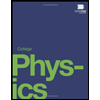 College PhysicsPhysicsISBN:9781938168000Author:Paul Peter Urone, Roger HinrichsPublisher:OpenStax College
College PhysicsPhysicsISBN:9781938168000Author:Paul Peter Urone, Roger HinrichsPublisher:OpenStax College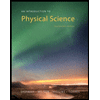 An Introduction to Physical SciencePhysicsISBN:9781305079137Author:James Shipman, Jerry D. Wilson, Charles A. Higgins, Omar TorresPublisher:Cengage Learning
An Introduction to Physical SciencePhysicsISBN:9781305079137Author:James Shipman, Jerry D. Wilson, Charles A. Higgins, Omar TorresPublisher:Cengage Learning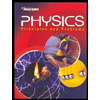 Glencoe Physics: Principles and Problems, Student...PhysicsISBN:9780078807213Author:Paul W. ZitzewitzPublisher:Glencoe/McGraw-Hill
Glencoe Physics: Principles and Problems, Student...PhysicsISBN:9780078807213Author:Paul W. ZitzewitzPublisher:Glencoe/McGraw-Hill Principles of Physics: A Calculus-Based TextPhysicsISBN:9781133104261Author:Raymond A. Serway, John W. JewettPublisher:Cengage Learning
Principles of Physics: A Calculus-Based TextPhysicsISBN:9781133104261Author:Raymond A. Serway, John W. JewettPublisher:Cengage Learning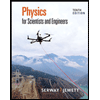 Physics for Scientists and EngineersPhysicsISBN:9781337553278Author:Raymond A. Serway, John W. JewettPublisher:Cengage Learning
Physics for Scientists and EngineersPhysicsISBN:9781337553278Author:Raymond A. Serway, John W. JewettPublisher:Cengage Learning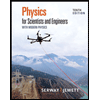 Physics for Scientists and Engineers with Modern ...PhysicsISBN:9781337553292Author:Raymond A. Serway, John W. JewettPublisher:Cengage Learning
Physics for Scientists and Engineers with Modern ...PhysicsISBN:9781337553292Author:Raymond A. Serway, John W. JewettPublisher:Cengage Learning

College Physics
Physics
ISBN:9781938168000
Author:Paul Peter Urone, Roger Hinrichs
Publisher:OpenStax College

An Introduction to Physical Science
Physics
ISBN:9781305079137
Author:James Shipman, Jerry D. Wilson, Charles A. Higgins, Omar Torres
Publisher:Cengage Learning

Glencoe Physics: Principles and Problems, Student...
Physics
ISBN:9780078807213
Author:Paul W. Zitzewitz
Publisher:Glencoe/McGraw-Hill

Principles of Physics: A Calculus-Based Text
Physics
ISBN:9781133104261
Author:Raymond A. Serway, John W. Jewett
Publisher:Cengage Learning

Physics for Scientists and Engineers
Physics
ISBN:9781337553278
Author:Raymond A. Serway, John W. Jewett
Publisher:Cengage Learning

Physics for Scientists and Engineers with Modern ...
Physics
ISBN:9781337553292
Author:Raymond A. Serway, John W. Jewett
Publisher:Cengage Learning
Domestic Electric Circuits; Author: PrepOnGo Class 10 & 12;https://www.youtube.com/watch?v=2ZvWaloQ3nk;License: Standard YouTube License, CC-BY